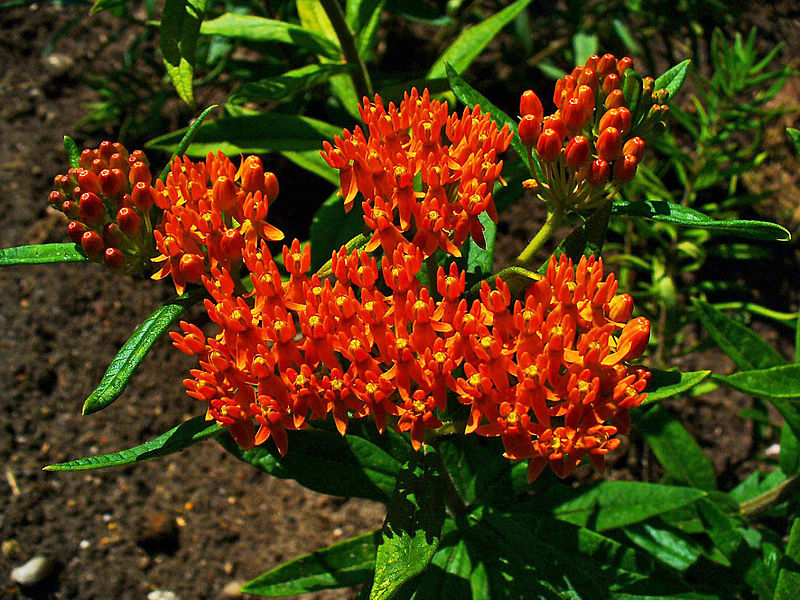Focus on Flowers - Milkweed

You may have memories from your childhood of cracking open milkweed pods and blowing the seeds adrift on their silky tufts. If so, you’re likely picturing the most well-known of the milkweed genus: the Common Milkweed (generally more Eastern) or Showy Milkweed (generally more Western). Although these species are listed on various provinces’ noxious weed lists due to the agricultural threats they pose in terms of their potential for proliferation in pastures and their toxicity to livestock, they are only 2 of at least 10 different species of milkweed that grow across the country. Most milkweeds are fantastic pollinator-supporters in the garden and natural ecosystems and pose no threat as weeds. A particularly pretty milkweed is the Butterfly Milkweed (A. tuberosa) with its bright orange, long-lasting flowers (featured in the photo).
Milkweeds (Asclepias sp.) are host plants for the monarch butterfly, being the only plant monarch larvae (caterpillars) will eat. The female butterfly lays about 400 little yellow eggs on the underside of milkweed leaves which the larvae feed on when they hatch. Milkweed is so named due to the sticky white sap it produces. This milk is a bitter poison, beneficial to monarchs who store it in their bodies, making them toxic to many predators who learn to avoid them. Adult butterflies feed on the nectar of a variety of fall-flowering plants including bergamot, purple coneflower and brown-eyed-susan, fuelling up for their long migration south for the winter.
Milkweed is just one example of a native wildflower that has evolved with pollinator populations and therefore provides them with food and habitat. Native plants provide necessary habitat and food, supporting pollinator health and biodiversity. To plant a pollinator-friendly garden, consider the following:
- Include a variety of flowering and nectar-producing native plants to compliment your vegetables or exotic ornamentals
- Include plants that flower in every month of the growing season
- Don’t forget water and nesting sites for native bees!
For more on the Monarch, visit the info pages on our Pollination Canada or Nature Canada websites.
Back to May 2012 Newsletter

